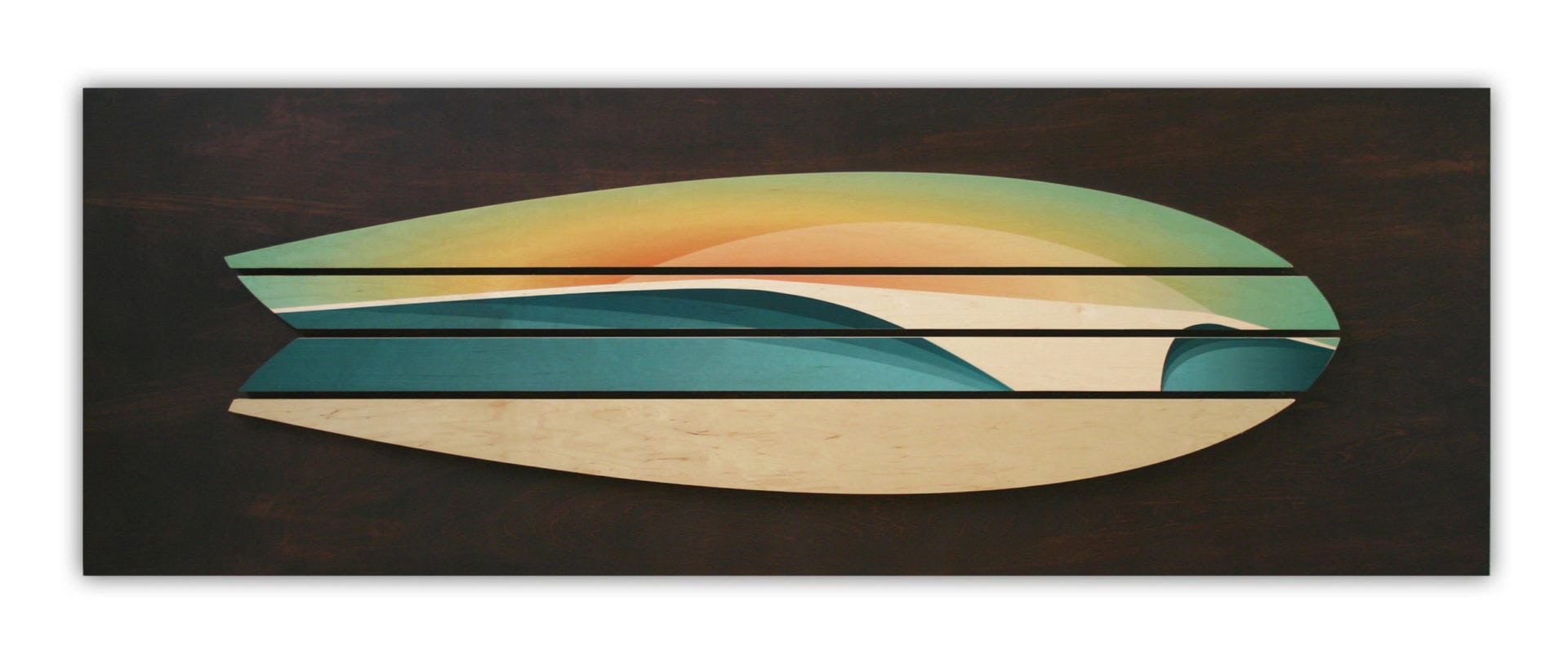
Surfboard artwork has evolved to become a popular trend in the modern world, offering a unique and vibrant touch to interior design. Beyond their traditional use in water sports, surfboards have found a new purpose as artistic statements and eye-catching accents in homes, offices, and commercial spaces. With their sleek shapes, vibrant colors, and distinctive designs, surfboards add a sense of adventure, freedom, and coastal charm to any environment. Whether displayed as wall art, repurposed as furniture, or incorporated into themed spaces, surfboard artwork brings the spirit of the ocean into the modern aesthetic, allowing individuals to express their love for surfing culture and embrace a laid-back, beach-inspired vibe.
Check out Laguna Beach wave artist Shaun Thomas’ new surfboard wall art collection. Perfect fit for the surfer enthusiast looking for artistic surfboards. Although new or used boards do look cool as surfboard wall art, these pieces in particular really pops off the wall with the contrasting colors of dark walnut stained wood and the vibrant colors of the wave art. It goes well in many coastal themed rooms and offered in various sizes from to accommodate any sized room. To learn more about sizing and pricing on this surfboard wall art, click here.
To view Shaun Thomas’ artwork in person, come visit his coastal inspired Laguna Beach Art Gallery where you can find his modern ocean wave art and wood wave sculptures on display.Ride the Wave with Artistic Surfboards and Stunning Wall Art
by Artist Shaun Thomas- “Sunset Peak”
- “Hokua”
what is a fish shaped surfboard?

Fish surfboards refer to the tail setup of the surfboard. There are different types of fish surfboards from hybrid fish to retro fish and more. Becoming popular back in the seventies, right around the time the surf world was transitioning from a single fin, todays fish’s can be seen with have 2, 3 or even 4 fins. Fish surfboards typically have short and wide templates, packing in more foam, which results to more buoyancy, ease of catching waves and tighter turns in the pocket. From small to large waves, the board is a blast! Capable of handling all types of conditions.
Growing up, Shaun Thomas’ often switched from riding his traditional short board, to the fish shaped board quite often. This shape reminds him of the long hot summer days as a kid playing around in the water – not a worry in the world. That’s what this wooden mini surfboard wall art represents – nothing but positive vibes.
3,000+ Years of Surf Culture and Art: From Peru to North America








